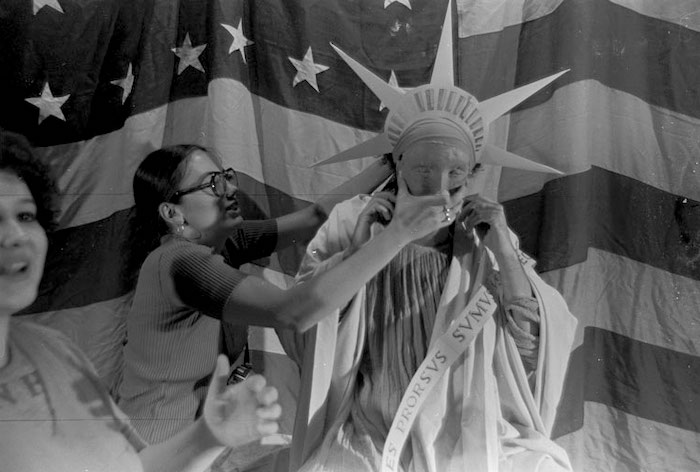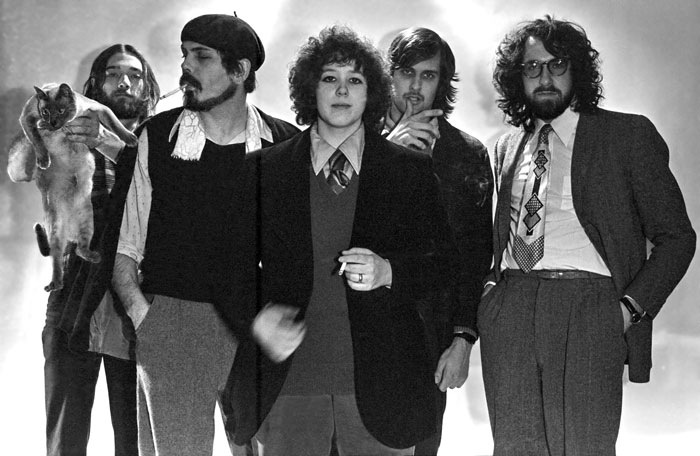
Fran Slater, Steve Cosgrove, Mike Enright
We're Just Like You was a media arts collective put together in Cincinnati in 1976. Founding members were Michael Binder, Steve Cosgrove, Mike Enright, Fran Slater, and Fred Wild. A floating group of friends who either lived with us or partied with us were also essential to our pieces; important players were dancer Sandy Dunn, baker Bill Pritz, photographer Mike Fogarty, and guitarist Bob Cotter. Initally we lived together in a house on Eden Avenue near the campus of the University of Cincinnati. Most of us worked at a local beer garden (owned by a Kundalini yoga ashram) called Mecklenburg Gardens. Later we moved to a 10,000 square foot loft downtown, where we threw parties for four or five hundred people at a time featuring bands, kegs, mountains of food (we were excellent at food prep), and 16mm movies.
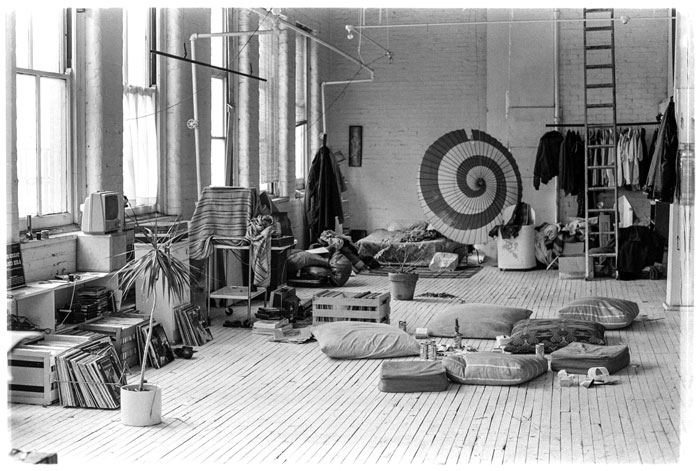
We took out a loan (difficult at the time; starving artists don't have credit histories) for $12,000. With the money we bought equipment: a motorized Bolex 16mm camera with a 400-ft magazine and several lenses, a Nagra IV deck, a Tascam 3340 4-track deck, an editing block with a mag reader, lights, mics, and finally, a Sony Portapak deck and camera.
It was fortunate that we bought the Portapak—our equipment expenditures meant that we didn't have a dime left over to actually make a 16mm movie. At one point we were able to scrape up some additional cash for a short, a portfolio reel of our work in various media. I'm not sure that it was actually shown to anyone.
At Portapak video, however, we excelled. The Sony Portapak system was one of the first truly portable consumer video cameras available in the United States (Bob Crane had one in AutoFocus). The media was 1/2 inch reel-to-reel video tape, the same tape found in the VHS format but without the enclosing cartridge. Unlike later camcorders, the deck wasn't built into the camera but carried separately in a small heavy box with a lid. Enormously heavy batteries could drive the deck and camera for about an hour.
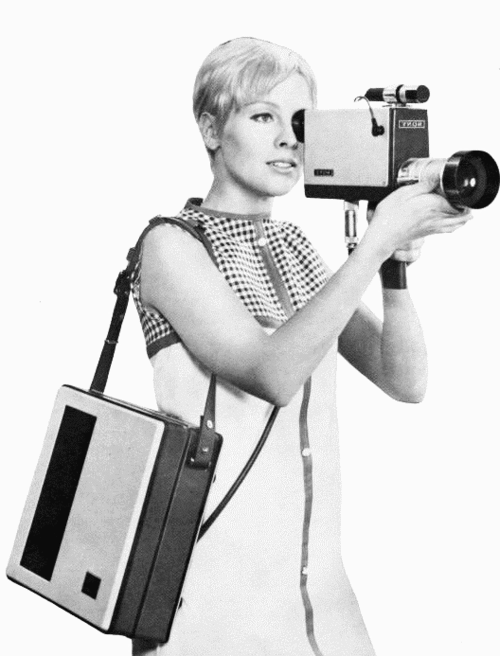
A wide strap let the camera operator shoot with the deck hanging off one shoulder. The off-the-shoulder technique never worked very well in practice, however, since the image tended to break up when the deck was in the vertical postion. Also
the weight of the deck threw the shooter off-balance and caused intense pain. We often ended up being restricted to the radius of a long camera cable we purchased, or we shot with someone holding the deck horizontally and walking around
behind the cameraman. (To see this technique in action, look near the end of the third part of Spamwalk
, posted below.)
Spamwalk
is very much a part of the video art aesthetic of its time. On one level it is a lampoon of the performance/process pieces WJLY—in our self-appointed role as agents provocateurs of the Cincinnati scene—were seeing
on a regular basis at artist forums hosted by the Contemporary Arts Center. Yet on another level Spamwalk
is one of those pieces: a methodical, leisurely exploration of a
process with its own rigorous rules and a formal visual component.
WJLY was part of its time though somewhat out of its place in conservative Cincinnati. We loved Andy Warhol movies. We listened to Patti Smith and the Ramones constantly, and anything else even vaguely connected to the New York punk and No
Wave scenes. We were big fans of video/performance pieces by groups like San Francisco's Ant Farm, especially Media Burn and their hugely ambitious production of
Destruction of Media Object
;
Fearstuff
, currently a lost video; and finally the Alternate Pieta
series. Many of the videos were shown at Cincinnati's Contemporary Arts Center and wherever else we could find to show them. Video art festivals were few and
far between at the time.
In addition to video WJLY did performance pieces, at first small-scale. The First Variation on the Alternate Pieta was actually a photo shoot that became a sort of play; the Second Variation was done at a friend's party. The Third Variation was a major piece with over thirty cast members, commissioned for the University of Cincinnati's Winter Art Melt in 1976 (or maybe '77). We used most of the money to construct the Media Ziggaraut, a huge pyramidal structure with sturdy ramps that was used in the climax of the ceremony. We made designs and costumes, wrote a script, choreographed the ceremony, and performed it over two nights for large and puzzled audiences. There were at least three Portapaks covering the performance; a master edit was made and probably still survives (though the degree of deterioration of the media—all the Sony-brand tapes in particular—is frightening).
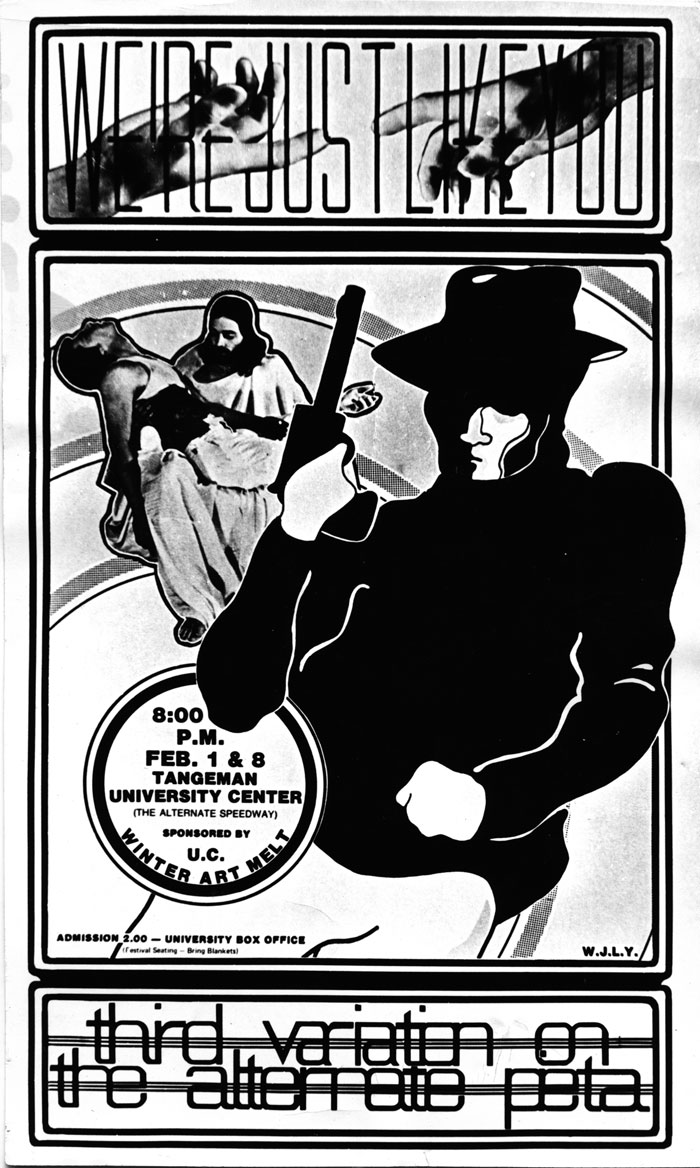
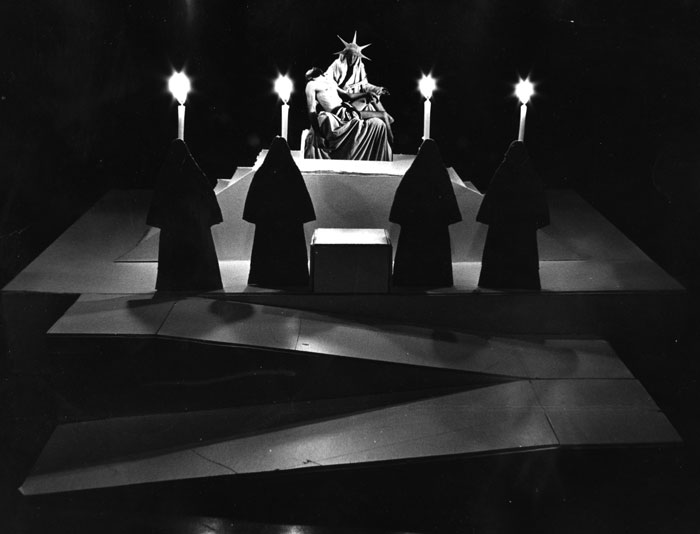
Also videotaped were hours of concert footage of The Ed Davis Band, a group specifically created for the Third Variation of the Alternate Pieta. Ed had a life of its own after the
Pieta and released what has been called the first Cincinnati punk 45 (Keith Richards' Dead
b/w Asshole), played many loft parties and club dates, opened for The Patti Smith Group at their first local concert (we
taped that, too, with Patti's bleary consent), and went on to become a part of Cincinnati's storied musical history.
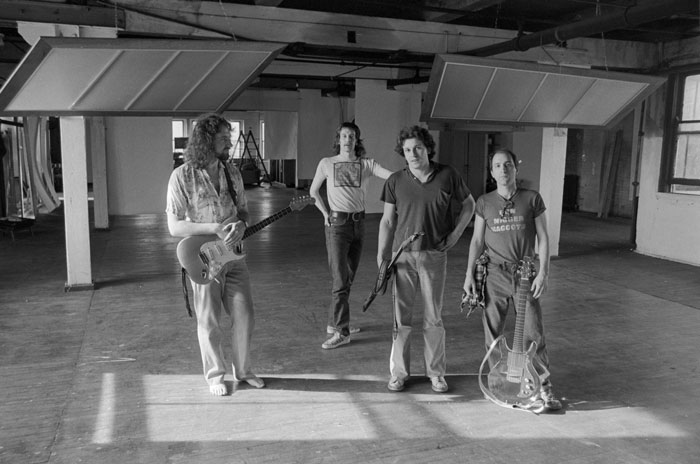
The last major work staged by WJLY was commissioned by the Contemporary Arts Center for their Nine in the NInth series and performed there in 1978: Dinner Without Will at Dot and Bill's Media Grill. Various nude figures, wrapped only in strategically-placed surgical gauze, were tied to chairs and scattered through a restaurant set populated by the audience. Waiters sold beer, wine, and snacks; an elegantly dressed pianist played "Around the World in Eighty Days" continously for several hours at a huge Bosendorfer grand rented for Cecil Taylor's show on the following evening. Video monitors throughout the set showed pre-recorded footage of other bound figures attempting to eat. Finally, The Ed Davis Band played a set, and then repeated it. Again, this was recorded with multiple Portapaks, though I'm not sure any comprehensive edit was ever attempted. Newspaper and magazine coverage was savage.
By then the entire enterprise was starting to disintegrate; members dispersed to New York, Chicago, Austin, and oblivion. The legacy of We're Just Like You is a few pictures, some deteriorating video, a single web page.
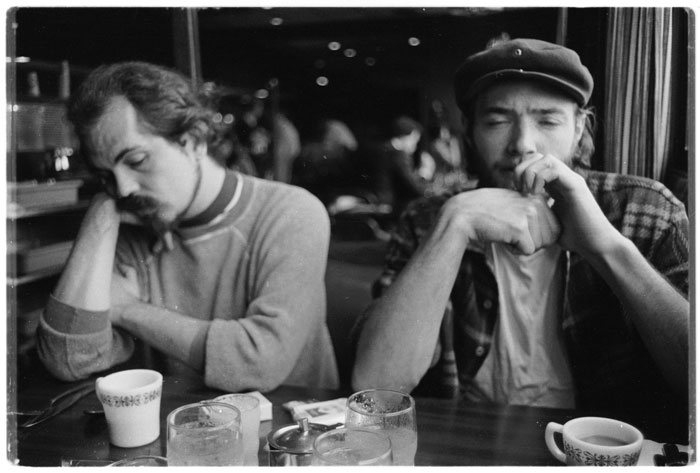
International House of Pancakes
